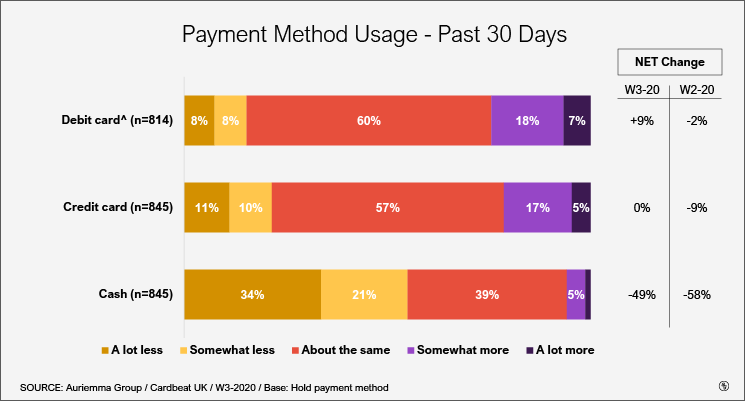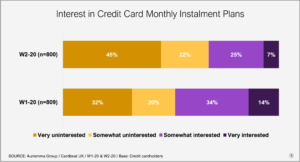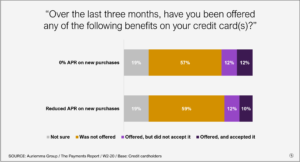(New York, NY) Bitcoin has been around for over a decade but continues to find its footing with consumers less familiar with it. Famously first used to purchase Papa John’s pizza in 2010, the cryptocurrency’s value has grown from $725 in 2015 to over $64,000 as of this writing, creating some investment winners and losers along the way. Auriemma Group’s latest issue of Mobile Pay Tracker investigated consumers’ relationship with Bitcoin and cryptocurrency in general, uncovering who knows about it, who has it, what they’re using it for, how they’d like to use it in the future, and more.
1. Lack of understanding prevents cryptocurrency ubiquity.
Cryptocurrency has captured mainstream attention since its launch, but few consumers truly understand how it works—74% say they are a cryptocurrency novice. While some may be able to speak about it generally, its unlikely your average cryptocurrency holder is explaining the blockchain to their friends. Overall, though, nearly everyone (96%) has at least heard of cryptocurrency, highlighting just how culturally significant it has become during its relatively short tenure.
“As a payments ecosystem, cryptocurrency will need to become more widely understood for it to truly flourish,” says Jaclyn Holmes, Director of Research at Auriemma Group. “But low levels of understanding may be enough for a casual investment, even if the currency is far from becoming the decentralized alternative to cash.”
2. About one-in-six consumers currently own a cryptocurrency.
Age plays a notable role in cryptocurrency ownership, with some Gen X and Baby Boomer consumers likely hesitant to use it as an investment vehicle due to its volatility. With more time to absorb the ebbs and flows of the market and more openness to emerging payment types, Gen Z and Millennial cardholders are more likely to hold cryptocurrency (25%-30%).
“Not only do younger cardholders have the advantage of time when it comes to cryptocurrency investing,” says Holmes. “The group is also generally more open to novel technologies and approaches in the payments space. We’ve seen it with mobile payments, P2P payments, contactless technology, and more.”
Still, without high levels of understanding, 57% of those who own cryptocurrency say it comprises less than one-quarter of their overall savings/investment portfolio. Though thousands of cryptocurrencies are in circulation, Bitcoin, Dogecoin, and Ethereum are the most owned among consumers (7-11%).
3. Those with cryptocurrency want more.
Looking ahead, one-quarter of consumers are interested in buying or receiving cryptocurrency in the next 12 months. This figure increases to 81% among those who currently hold cryptocurrency. Even those who used to hold cryptocurrency show increased interest (49%), which exemplifies the largely positive experience those who have ever held it have had with the product.
“While traditionally bought and sold proactively, we’ve noticed passive opportunities for cryptocurrency acquisition sprouting up across the payments space. Venmo, for example, now allows its users to redeem their funds for Bitcoin, Ethereum, Litecoin, or Bitcoin Cash,” says Holmes. “It wouldn’t be surprising if it became a common redemption option for credit card rewards programs.”
In fact, cryptocurrency as a cash back reward is of interest to one-third of consumers, while those who currently hold cryptocurrency are even more interested (75%). That isn’t to say cryptocurrency rewards will become table stakes, but they could certainly become a program sweetener, particularly for younger cardholders looking for a low-risk way to participate in the space.
4. It’s considered a long-term investment, not liquid funds.
Though cryptocurrency can sometimes appear to be a get-rich-quick scheme, the reality is that those who hold it broadly think of it as a long-term (38%), not a short-term (13%) investment. Still, knowledge remains key. Losing the errant dollar to a defunct cryptocurrency may not change one’s financial future, but an overzealous investor could lose a lot of money quickly, like this Shanghai investor who purchased Squid Game crypto.
“Some consumers simply play around with cryptocurrency to see what happens, but this could become a high-risk endeavor for those offering up their life savings,” says Holmes. “Issuers can play in this space by offering their cardholders the opportunity to buy into cryptocurrency without such a large price tag—using rewards points to purchase smaller portions of trusted cryptocurrency providers.”
Without the infrastructure to accept cryptocurrency as a form of payment at the point-of-sale, it will largely be seen as an investment product. Few (14%) see cryptocurrency as liquid funds for purchases, but if presented with the option to use theirs for a purchase at the point-of-sale, about half are likely.
Why should banks care about cryptocurrency?
While cryptocurrency is still relatively new and transaction volume remains low for the industry, it is undoubtedly a growing space. Those looking to play in the space will need to remain conscious of evolving regulation to ensure compliance needs are met. Still, banks and issuers can act as a refuge for consumers looking to dip their toe in without the exposure that comes with committing their hard-earned dollars to the investment. Providing cardholders the option to earn or redeem their account rewards as cryptocurrency allows them to passively participate in the space in a way that feels lower-risk, particularly for those new and just looking to play around.
Survey Methodology
Mobile Pay Tracker
This Auriemma Group study was conducted online within the US by an independent field service provider on behalf of Auriemma Group (Auriemma) in July 2021 among 2,003 adult mobile pay eligible credit cardholders. The number of interviews completed for both is sufficient to allow for statistical significance testing among sub-groups at the 95% confidence level ±5%, unless otherwise noted. The purpose of the research was not disclosed, nor did respondents know the criteria for qualifying.
About Auriemma Group
For more than 35 years, Auriemma’s mission has been to empower clients with authoritative data and actionable insights. Our team comprises recognized experts in four primary areas: operational effectiveness, consumer research, co-brand partnerships, and corporate finance. Our business intelligence and advisory services give clients access to the data, expertise and tools they need to navigate an increasingly complex environment and maximize their performance. Auriemma serves the consumer financial services ecosystem from our offices in New York City and London. For more information, call Jaclyn Holmes at (+1) 646-454-4200.














 And although consumers have historically preferred in-store shopping for groceries (and most still do), a notable 31% say they prefer using digital channels (i.e., websites, mobile apps) to make grocery purchases.
And although consumers have historically preferred in-store shopping for groceries (and most still do), a notable 31% say they prefer using digital channels (i.e., websites, mobile apps) to make grocery purchases.



